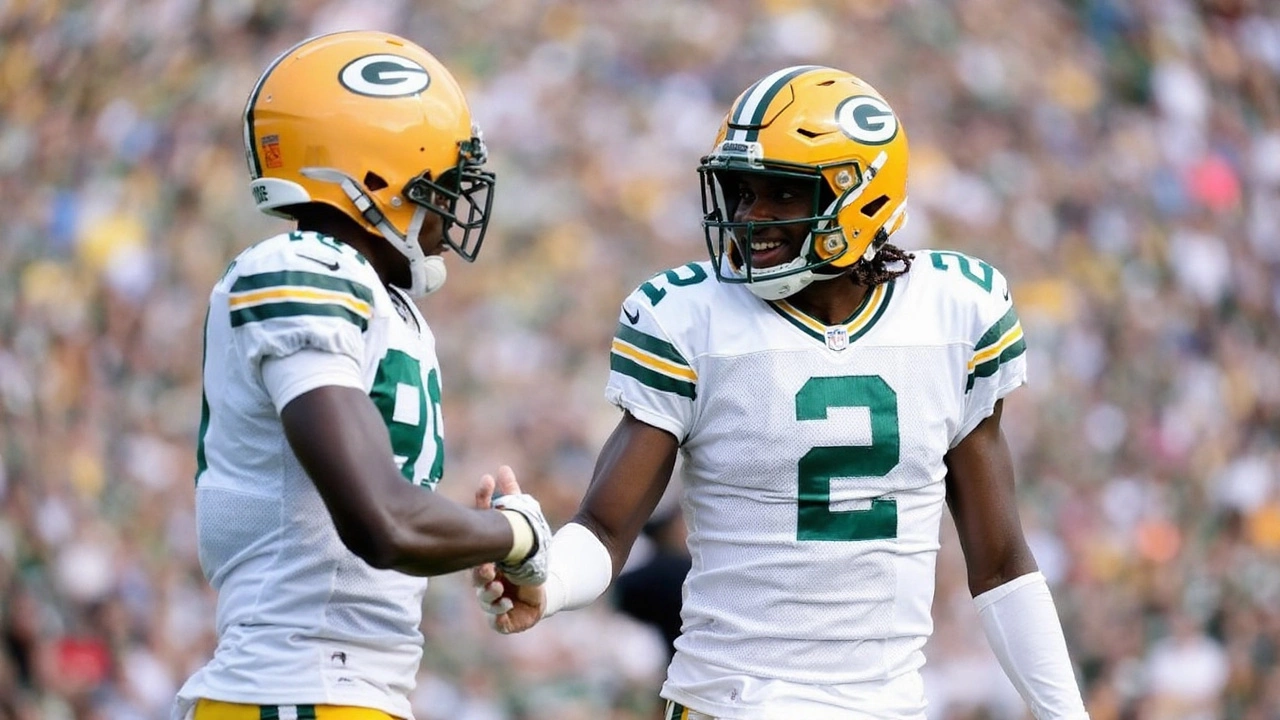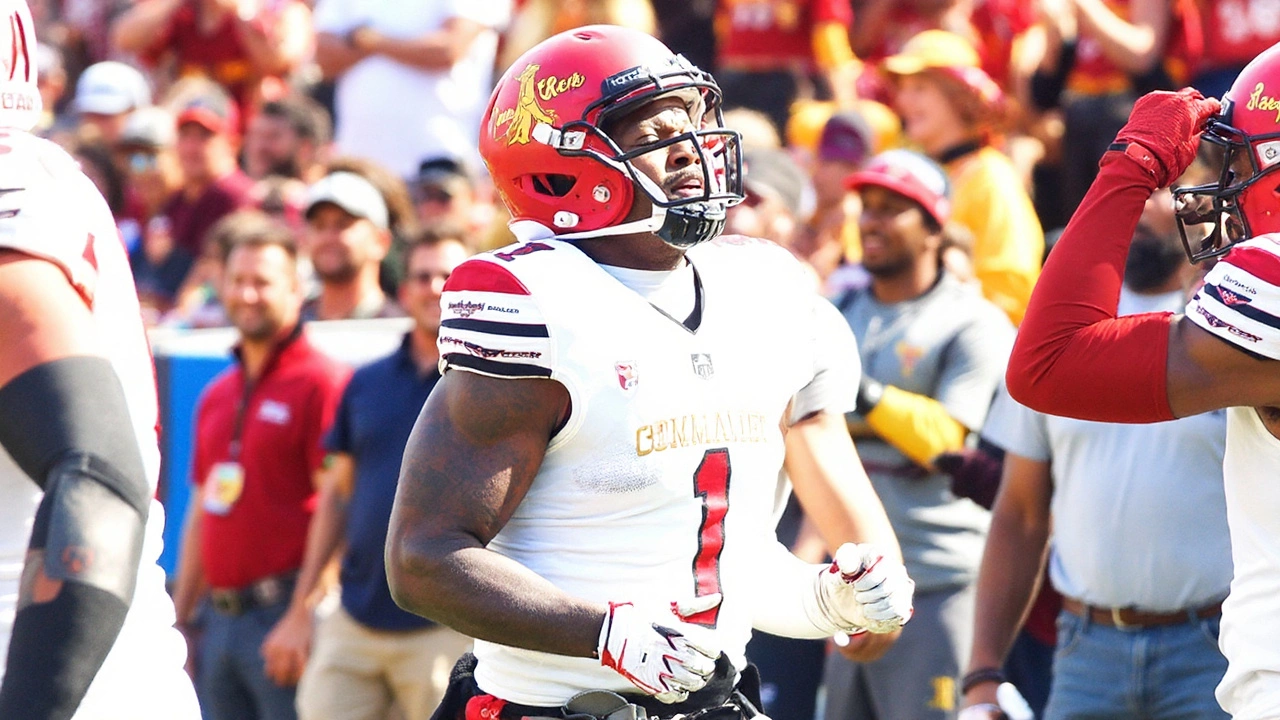Why this game screams touchdown props
Two young quarterbacks. A total sitting at 48.5. Washington catching 3.5 points on the road at Lambeau. For all the hype around Jayden Daniels and Jordan Love, this matchup might be decided by the guys who work the middle of the field and the quarterback who can outrun a linebacker to the pylon.
Oddsmakers are telling you to expect points, and the personnel fits the script. Green Bay under Matt LaFleur leans on motion, condensed splits, and play-action to free tight ends and slot options in the red zone. Washington, with Kliff Kingsbury pulling the strings, is happy to spread you out and let Daniels isolate a mismatch—or just keep it himself if the edge defender hesitates. That’s a friendly setup for anytime touchdown props.
Here’s the twist: both defenses have soft spots in the same place. Green Bay allowed the fifth-most receiving yards to tight ends last season and played one of the league’s higher rates of zone coverage. Washington, meanwhile, gave up eight scores to tight ends—top five in TDs allowed to the position. When both sides are leaky in the same area, red-zone touches tend to cluster there.

The best targets and how the matchups line up
Tight ends first, because the tape and the numbers agree. Zach Ertz remains Jayden Daniels’ safety blanket. He posted 66 catches, 654 yards, and seven touchdowns last season, plus another in the playoffs, and he led Washington in red-zone looks (18 targets, 10 catches). That’s a quarterback’s best friend in scoring territory—size, trust, and a knack for settling into soft spots against zone. With Green Bay ranking 25th in receiving yards allowed to tight ends a year ago, Ertz at +260 carries real value.
On the other side, Tucker Kraft has quietly become a drive finisher for the Packers. He led the team with 15 red-zone targets last season, turning 11 of them into 103 yards and six scores, and opened Week 1 this year with a 15-yard touchdown on the first series. He’s not just a dump-off option; they scheme him on leak routes and quick sticks off play-action near the goal line. Against a Washington defense that struggled to pass off crossers and seam routes to tight ends last season, Kraft fits the profile again.
Quarterback legs are a cheat code in this market. Jayden Daniels (+175) didn’t get in during Week 1, but that’s noise, not a trend. He scored six rushing touchdowns in his rookie year and has the ball on designed keepers near the stripe more than your average quarterback. If Green Bay squeezes Washington’s running backs at the line—as it did a week ago against Detroit—Daniels becomes the pressure release at the goal line. Read-option, sprint-out, broken play… he has multiple ways to cash this ticket.
Wide receivers with red-zone chemistry are next on the list. Terry McLaurin (+180) had a quiet Week 1 (2 catches on 4 targets for 27 yards), while newcomer Deebo Samuel soaked up touches, including a 19-yard rushing score. That doesn’t last. McLaurin played 79% of offensive snaps and historically earns trust in tight windows when the field shrinks. Against Green Bay’s zone looks, Washington will dial up deep overs and glance routes off RPOs, and that’s where McLaurin can win. If the Commanders trail—oddsmakers expect that at +3.5—his targets in scoring range climb.
For Green Bay’s receivers, Romeo Doubs (+205) remains a high-leverage option. LaFleur loves to isolate him on the boundary in compressed formations and let him box out on slants and fades. Dontayvion Wicks (+470) is a longer number but a fun swing: he’s used on motion and crossers that can turn into catch-and-run touchdowns from 10–20 yards out. He won’t see the highest volume, but his targets often come with space.
Running backs are about volume, yes, but context matters. Josh Jacobs (-180) profiles as the chalkiest scorer in this game, and for good reason. He owns the short-yardage and goal-line snaps for the Packers and fits their downhill looks from heavy personnel. If Green Bay controls the game script, Jacobs’ touchdown equity is the highest on the board. On the Washington side, Jacory Croskey-Merritt (+220) is a name to know. He brings burst and can stay on the field in hurry-up sets, giving him access to both traditional carries and short catches inside the 10-yard line.
Now layer in the defenses. Green Bay’s zone structure invites throws to tight ends and backs underneath, then rallies to tackle. That’s fine at midfield; it’s a problem in the red zone, where spacing is tight and a strong-handed tight end can wall off defenders for a quick score. Washington under Dan Quinn leans on zone shells and pattern-match rules that can be stressed by play-action to tight ends and quick motion—the exact stuff Green Bay majors in.
Coaching tendencies back up the picks. Kingsbury’s red-zone menu for Daniels includes speed option, QB draw out of spread sets, and sprint-out with run-pass flexibility. Those are touchdown-friendly plays for a mobile quarterback. LaFleur, meanwhile, builds layers: heavy personnel to force base defenders on the field, then tight end leaks or backside slants when the linebackers step downhill. That’s Kraft and Doubs territory.
Game flow matters. If the Packers jump ahead, Washington tilts pass-heavy, boosting Ertz and McLaurin. If Washington starts fast or flips short fields with a takeaway, we’ll see more designed runs for Daniels near the goal line. A tight game with long, methodical drives favors the tight ends on both sides because red-zone efficiency becomes the tiebreaker.
A quick word on timing. These markets move all day on Thursdays as injury reports and inactives shape usage. Tight ends’ numbers, in particular, can shorten fast. If you’re leaning into this angle, monitor inactives 90 minutes before kickoff. Any absence among linebackers or safeties swings touchdown equity toward the middle of the field.
Weather at Lambeau in early September usually isn’t a headline, which helps passing efficiency and play-calling on the goal line. Absent wind or rain, precision routes and timing throws to tight ends hold up. That’s another small nudge toward Ertz and Kraft.
If you’re building a card, think in clusters that match your game script rather than spraying the board. For a Packers-led script: Jacobs, Kraft, and Doubs make sense together. For a Commanders-led or catch-up script: Daniels, Ertz, and McLaurin pair well. Mixing one long shot like Wicks or Croskey-Merritt adds upside without relying on a single thin outcome.
Here are the headline targets, the case for each, and where the value sits right now:
- Zach Ertz (+260, Washington TE): Red-zone target leader for Washington, trusted by Daniels, and faces a defense that struggles vs tight ends.
- Tucker Kraft (Green Bay TE): Team leader in red-zone looks last year, featured early this season, and benefits from LaFleur’s play-action designs.
- Jayden Daniels (+175, Washington QB): Designed runs near the stripe and scramble ability create multiple paths to a score.
- Terry McLaurin (+180, Washington WR): Snap share and historical red-zone chemistry point to a rebound after a quiet Week 1.
- Josh Jacobs (-180, Green Bay RB): Goal-line workhorse with the most straightforward path if the Packers lead.
- Jacory Croskey-Merritt (+220, Washington RB): Live in hurry-up and short-yardage looks, with passing-down access near the goal line.
- Romeo Doubs (+205, Green Bay WR): Boundary isolation specialist on slants and fades in tight space.
- Dontayvion Wicks (+470, Green Bay WR): Lower volume but schemed touches on motion and crossers that can pop for scores.
The bottom line on matchups: both teams funnel touchdowns to the same spots—tight ends and short-area specialists—while one quarterback brings extra equity with his legs. With a high total and a spread inside four points, you have the ingredients for multiple scorers, not just a single bell cow carrying the night.

Trenton Whitworth
Hi, I'm Trenton Whitworth, a sports enthusiast with a passion for tennis. I've been studying and analyzing various sports for over a decade, with a particular focus on tennis. I love sharing my knowledge and insights through writing and have contributed to several publications. My goal is to help others better understand the game and inspire them to enjoy it just as much as I do. I believe that staying active and engaged in sports can lead to a healthier and happier life.